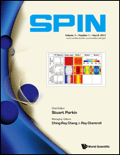
SPIN
Scope & Guideline
Exploring the frontiers of Electrical and Electronic Engineering.
Introduction
Aims and Scopes
- Spintronics and Magnetic Materials:
The journal focuses heavily on the study of spintronic materials, exploring their structural, electronic, and magnetic properties. Research often includes novel materials such as Heusler alloys and two-dimensional van der Waals materials, emphasizing their potential applications in devices. - Computational and Theoretical Models:
A significant portion of the published work utilizes advanced computational techniques, including Monte Carlo simulations and first-principles calculations, to investigate magnetic behaviors, phase transitions, and other phenomena related to spin systems. - Quantum Computing and Information Technology:
The journal also explores the intersection of spintronics with quantum computing, investigating quantum information processing, quantum circuits, and algorithms that leverage spin-based systems for improved performance. - Nanostructures and Device Fabrication:
Research includes the fabrication and characterization of nanoscale devices such as magnetic tunnel junctions and spintronic memory, highlighting innovative techniques like focused ion beam nanomachining. - Interdisciplinary Approaches:
'SPIN' encourages interdisciplinary studies that bridge physics, materials science, and engineering, promoting collaborative research that addresses complex challenges in spin-based technologies.
Trending and Emerging
- Spin-Orbit Coupling and Spin Transport:
Recent publications indicate a surge in interest in spin-orbit coupling effects and their implications for spin transport phenomena, particularly in heterostructures and topological materials, which are crucial for the development of next-generation spintronic devices. - Quantum Technologies and Information Processing:
The integration of spintronics with quantum technologies is gaining momentum, with more studies exploring spin-based quantum computing, secure communication, and quantum algorithms, marking a significant trend towards practical applications of theoretical advancements. - Nanostructured and Hybrid Systems:
There is an increasing emphasis on the study of hybrid systems that combine different materials and functionalities, such as magnetic heterostructures and nanocomposites, which are pivotal for enhancing device performance and enabling new functionalities. - Advanced Fabrication Techniques:
The journal is witnessing a trend towards innovative fabrication methods, such as advanced lithography and ion beam techniques, that allow for the precise engineering of nanoscale structures and interfaces, which is essential for realizing complex spintronic devices. - Multifunctional Materials and Applications:
Research into multifunctional materials that exhibit combined properties, such as magneto-optical effects or thermoelectric behavior, is on the rise, reflecting the need for materials that can serve multiple roles in future technologies.
Declining or Waning
- Traditional Magnetic Materials:
Research focused on conventional magnetic materials, such as bulk ferromagnets, appears to be less prominent, as the field shifts towards more complex and novel materials that exhibit unique spin properties. - Low-Dimensional Systems:
There has been a noticeable decline in studies centered around low-dimensional magnetic systems, such as one-dimensional chains or small clusters, which may be overshadowed by the growing interest in two-dimensional materials and their heterostructures. - Basic Theoretical Models:
While foundational theoretical models remain important, there is a decreasing trend in publications solely focused on basic models without experimental or practical applications, as researchers seek to connect theory with real-world applications.
Similar Journals

EUROPEAN PHYSICAL JOURNAL B
Connecting Researchers with Cutting-Edge DiscoveriesEUROPEAN PHYSICAL JOURNAL B (ISSN: 1434-6028, E-ISSN: 1434-6036), published by Springer, is a prominent international journal based in Germany that focuses on the fields of Condensed Matter Physics and Electronic, Optical and Magnetic Materials. With a converged publication timeline from 1998 to 2024, it caters to a diverse audience that includes researchers, professionals, and students striving for the latest advancements in these vital areas of physics. The journal is recognized with a Q3 ranking in both relevant categories for 2023, showcasing its solid yet notable standing within the academic community. Although currently without an H-index, its Scopus rankings reflect a percentile performance of 41st and 39th, respectively, indicating a growing influence among its peers. The journal offers open access options, ensuring that groundbreaking research is widely accessible and contributes to the collective knowledge within the scientific domain. By aiming to publish high-quality, well-researched articles, the EUROPEAN PHYSICAL JOURNAL B plays a crucial role in disseminating innovative findings and fostering collaboration in the field of physics.
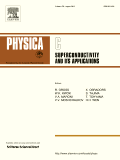
PHYSICA C-SUPERCONDUCTIVITY AND ITS APPLICATIONS
Pioneering Breakthroughs in Superconductivity and BeyondPHYSICA C-SUPERCONDUCTIVITY AND ITS APPLICATIONS, published by Elsevier, stands as a pivotal journal in the fields of Condensed Matter Physics, Electrical and Electronic Engineering, and Energy Engineering. With its inception dating back to 1988, the journal has successfully established itself as a key platform for disseminating high-quality research and innovative applications related to superconductivity and its diverse technological implications. Although it currently does not offer open access options, the journal maintains a respectable Q3 quartile ranking in multiple categories as of 2023, indicating its continued relevance and impact within the academic community. Researchers, professionals, and students alike benefit from its insights, as it features peer-reviewed articles covering the latest advancements and theoretical breakthroughs in superconductivity. As it converges towards the end of its operational span in 2024, this journal continues to stimulate valuable dialogue and foster collaborations that push the frontiers of knowledge in this exciting and rapidly evolving domain.

JOURNAL OF MAGNETISM AND MAGNETIC MATERIALS
Connecting Ideas in Magnetism ResearchJOURNAL OF MAGNETISM AND MAGNETIC MATERIALS, published by Elsevier, stands at the forefront of research in the fields of magnetism and magnetic materials. With an established history since 1975 and a commitment to advancing knowledge through rigorous peer-reviewed studies, this journal has become a valuable resource for researchers and academics alike. Housed in the Netherlands and indexed under Scopus, it ranks Q2 in both Condensed Matter Physics and Electronic, Optical and Magnetic Materials, reflecting its impact within these domains. The journal aims to disseminate innovative research findings, methodologies, and reviews pertaining to magnetic phenomena, thus facilitating significant advancements in applications ranging from data storage technologies to medical imaging. While the journal does not feature open access options, it remains a vital part of the scientific dialogue, showcasing content that attracts a diverse audience, including researchers, professionals, and graduate students dedicated to enhancing their understanding of magnetism in various materials.
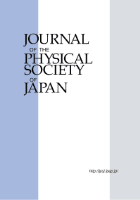
JOURNAL OF THE PHYSICAL SOCIETY OF JAPAN
Illuminating the Path of Scientific Inquiry since 1946The JOURNAL OF THE PHYSICAL SOCIETY OF JAPAN, published by the Physical Society of Japan, has been at the forefront of advancing knowledge in the field of Physics and Astronomy since its inception in 1946. With a commendable reputation reflected in its Q2 ranking within its category for 2023, this journal serves as a vital platform for disseminating high-quality research and innovative concepts. Researchers and professionals alike can engage with cutting-edge studies and reviews that span a diverse range of topics pivotal to the physical sciences. Although the journal does not currently operate with an open access model, it maintains a robust impact on the global physics community, evidenced by its placement in the 59th percentile among a competitive pool of 243 journals. With an unwavering commitment to bridging theory and application, the JOURNAL OF THE PHYSICAL SOCIETY OF JAPAN continues to inspire and cultivate scholarly discourse and collaboration across disciplines.

PHYSICA STATUS SOLIDI B-BASIC SOLID STATE PHYSICS
Unveiling the Secrets of Electronic and Magnetic MaterialsPHYSICA STATUS SOLIDI B-BASIC SOLID STATE PHYSICS, published by Wiley-VCH Verlag GmbH in Germany, is an esteemed journal within the condensed matter physics sphere, covering pivotal advancements in basic solid state physics. With a rich history dating back to 1961, it serves as a scholarly platform for researchers, professionals, and students alike, providing insights into the fundamental properties and applications of electronic, optical, and magnetic materials. The journal currently holds a respectable Q3 ranking in both Condensed Matter Physics and Electronic, Optical, and Magnetic Materials as of 2023, indicating its impactful contributions to these fields despite its competitive landscape. While it does not offer open access, its comprehensive research findings are critical for those engaged in innovative material science research. With a convergence period extending to 2024, PHYSICA STATUS SOLIDI B continues to play a significant role in facilitating knowledge exchange and fostering advancements in solid state physics.
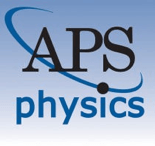
PHYSICAL REVIEW B
Fostering Insights in the Realm of Condensed MatterPHYSICAL REVIEW B, published by the American Physical Society, is a leading journal in the field of condensed matter physics and materials science, particularly focusing on electronic, optical, and magnetic materials. With an ISSN of 2469-9950 and an E-ISSN of 2469-9969, this periodical has garnered a prestigious reputation, achieving a Q1 ranking in both relevant categories as of 2023. The journal has recorded significant impact as reflected in its Scopus ranks, notably positioned at #95 out of 434 in Condensed Matter Physics and #75 out of 284 in the Materials Science sector, illustrating its importance in advancing research and discussions in these critical areas. Although it does not offer open access, PHYSICAL REVIEW B remains an invaluable resource for academics, researchers, and professionals seeking to increase their understanding of contemporary issues in condensed matter and material sciences. Established in 2005, this journal continues to foster innovation and dissemination of knowledge, making it a cornerstone publication for those engaged in cutting-edge research.

Applied Physics Reviews
Fostering Insights for Academic and Industrial ProgressApplied Physics Reviews, published by AIP Publishing, is a premier journal prominently positioned in the field of physics and astronomy. With an impressive impact factor that reflects its significance, this journal ranks in the 1st quartile (Q1) in 2023 and holds the 9th position out of 243 journals in General Physics and Astronomy according to Scopus, placing it in the 96th percentile of its category. Established as a vital platform for the dissemination of groundbreaking research and reviews, Applied Physics Reviews aims to bridge theoretical and experimental studies, enabling a comprehensive understanding of applied physics advancements. Although not open access, the journal provides a rich resource for researchers, professionals, and students keen on exploring the latest developments and trends within applied physics, offering insights that are crucial for both academic and industrial applications. With a converged timeline from 2014 to 2024, this journal continues to foster significant contributions to the field and encourages a collaborative dialogue among scholars and practitioners.
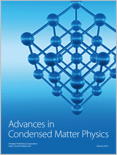
Advances in Condensed Matter Physics
Fostering Collaboration in Cutting-Edge PhysicsAdvances in Condensed Matter Physics is a distinguished journal published by HINDAWI LTD, dedicated to the rapid dissemination of high-quality research in the field of condensed matter physics. Since its inception in 2008, this Open Access journal has facilitated wide accessibility to cutting-edge findings and theoretical advancements, with aims to foster collaboration and innovation within the scientific community. With an ISSN of 1687-8108 and an E-ISSN of 1687-8124, the journal covers an extensive range of topics, from quantum materials to nanotechnology, ensuring relevance and engagement across various sub-disciplines. As a testament to its impact in the field, it is ranked in the Q3 category for 2023 within Scopus and holds a position in the 34th percentile for physics and astronomy. The journal's continuous commitment to publishing significant exploratory research until 2024 makes it a pivotal resource for researchers, professionals, and students eager to stay on the leading edge of condensed matter physics advancements.

IEEE Magnetics Letters
Exploring the Frontiers of Magnetics InnovationIEEE Magnetics Letters, published by IEEE-INST ELECTRICAL ELECTRONICS ENGINEERS INC, is a leading journal focusing on the rapidly evolving field of magnetics, encompassing electronics, optics, and magnetic materials. With an ISSN of 1949-307X and an E-ISSN of 1949-3088, this journal serves as a premier platform for researchers to disseminate innovative findings, discussions, and reviews from 2010 to 2024. Recognized for its contribution to the field, it is classified in the third quartile (Q3) of Electronic, Optical and Magnetic Materials, and it holds a respectable place in Scopus rankings, positioned #189/284 in its category. Although it operates under traditional access options, the journal remains vital for professionals and academics seeking to deepen their understanding of magnetics and its applications in modern technology. With its commitment to advancing knowledge and fostering innovation, IEEE Magnetics Letters continues to be an invaluable resource for those engaged in cutting-edge research.
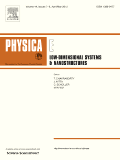
PHYSICA E-LOW-DIMENSIONAL SYSTEMS & NANOSTRUCTURES
Fostering collaboration in the world of low-dimensional physics.PHYSICA E-LOW-DIMENSIONAL SYSTEMS & NANOSTRUCTURES, published by ELSEVIER, is a premier journal dedicated to advancing the field of condensed matter and nanoscience, focusing on the innovative properties and applications of low-dimensional systems. With an esteemed Q2 ranking in multiple categories including Atomic and Molecular Physics, Condensed Matter Physics, and Nanoscience for 2023, this journal serves as a vital platform for researchers and professionals aiming to disseminate and discuss cutting-edge research. Established in 1974 and converging its focus from 1997 onwards, PHYSICA E captures the evolving landscape of material science, making it a crucial resource for anyone invested in the dynamics of electronic, optical, and magnetic materials. Although the journal operates on a subscription basis, its broad accessibility and significant placement within Scopus rankings—such as being in the 83rd percentile for Condensed Matter Physics—underscore its importance within the academic community. Researchers and students alike will find this journal a cornerstone for fostering knowledge and collaboration in the fields of nanotechnology and low-dimensional physics.